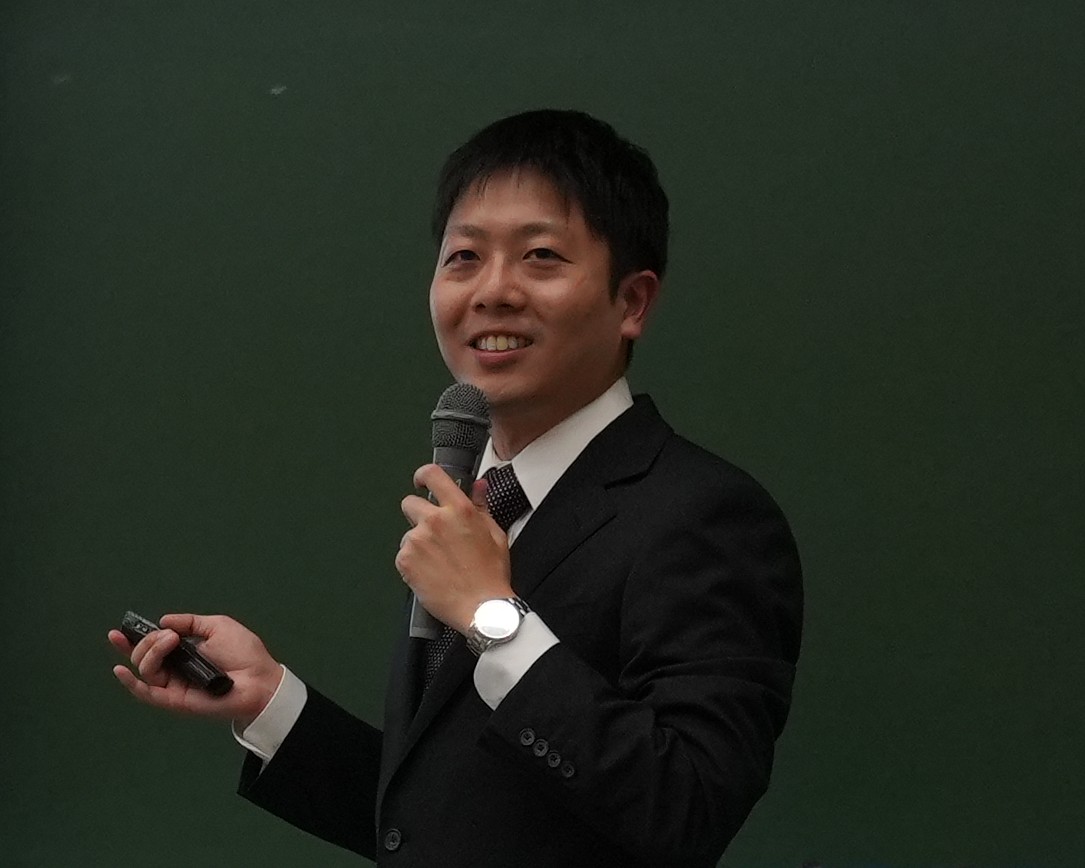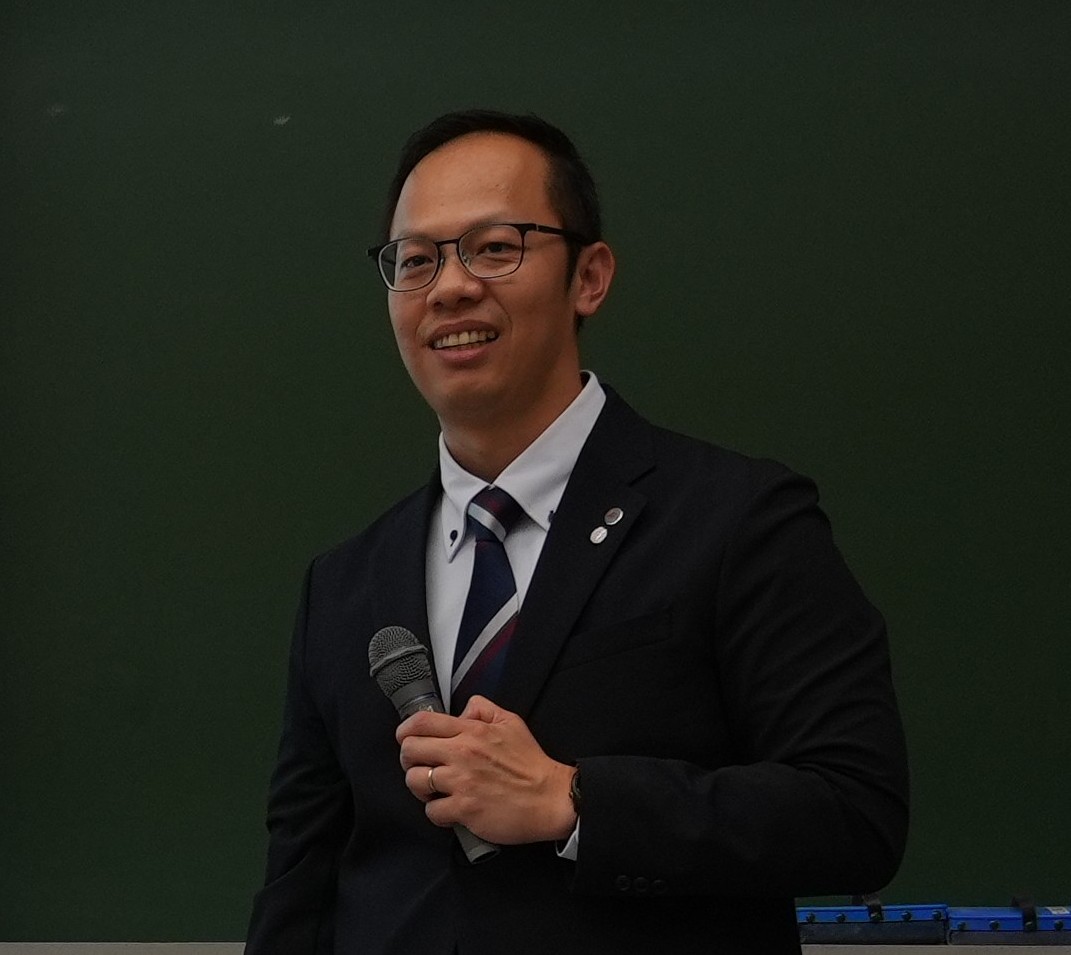第22回梅園賞授賞式が開催されました。
バイオサイエンス領域 神経システム生物学研究室の嶺岸卓德助教と環境微生物学研究室のChek Min Fey助教のお二方が第22回梅園賞を受賞しました。
9月25日に、バイオサイエンス領域大講義室(L11)にて授賞式と記念講演が行われ、多くの教職員と学生が参加し、受賞者の功績を称えました。
梅園賞は、梅園基金の設立趣旨に沿って、熱気溢れる時期にバイオサイエンス研究に精進し、バイオサイエンス領域において優れた研究成果(論文発表)をあげた本学の助教あるいはポスドク研究員を顕彰するものです。過去において助教あるいはポスドクとして本学に在籍していた方も選考の対象としてします。対象者が研究の推進に中心的な役割を果たしたと認められる発表論文(2023年6月1日〜2025年5月31日の期間に査読付き国際学術誌に発表されたもの)の学術的価値とオリジナリティの高さに審査の重点が置かれています。受賞者には表彰状と副賞が授与されました。

第22回梅園賞受賞者 嶺岸卓德助教のコメント

この度は栄えある賞をいただき、大変光栄に思うと同時に非常に身が引き締まる思い です。受賞の対象となった論文は、私が本学でポスドクとして在籍していた際に着手した研究です。本研究をまとめるまでには長い道のりでしたが、その間、継続的にご指導・ご支援くださった稲垣直之教授、そして共に研究に取り組んだ学生の皆さん、共同研究者の先生方に心より感謝申し上げます。今回の本賞を励みに、今後も研究のさらなる発展に向けて、一層精進してまいります。
嶺岸卓德助教の受賞研究の発表内容(演題と要旨)
神経細胞の移動を担う細胞膜張力を介したシグナル伝達機構
Mechanical signaling through plasma membrane tension underlying neuronal migration
Abstract:
Neurons migrate in a saltatory manner by repeating two distinct steps: extension of the leading process and translocation of the cell body. The extension of the leading process is driven by traction force generated at the growth cone at its tip. On the other hand, the translocation of the cell body is driven by actomyosin contractile force activated through Ca2+ signaling. However, the link between the leading process extension and subsequent cell body translocation remains unknown. By using scanning ion conductance microscopy, we show that leading process extension increases plasma membrane tension. The tension elevation activated the mechanosensitive ion channels and triggered Ca2+ influx, leading to actomyosin activation at the rear of the cell. Blockade of this signaling pathway disturbed cell body translocation, thereby inhibiting neuronal migration in three-dimensional environments. Thus, mechanical signaling through plasma membrane tension and mechano-channels links the leading process extension to cell body translocation, allowing rapid and saltatory neuronal migration.
第22回梅園賞受賞者 Chek Min Fey助教のコメント

I am honored to receive the 22nd Umesono Award from the Division of Biological Science. My studies on polyhydroxyalkanoate synthase (PhaC) enzyme began during my master’s degree under the guidance of Prof. Razip Samian and Prof. Sudesh Kumar at Universiti Sains Malaysia, and continued with structural studies during my doctoral research in Prof. Toshio Hakoshima’s laboratory in NAIST. These works have been supported by many collaborators from both academia and industry. Although the biodegradable plastic produced by Kaneka Corporation is now widely used in Japan (e.g. Green Planet straws and cutleries at Starbucks Japan), the catalytic mechanism of its key enzyme, PhaC, has remained elusive. Our work has revealed the 3D structure of the full-length PhaC for the first time. I would also like to express my gratitude to Prof. Shosuke Yoshida for his support and for granting me the freedom to pursue this research. In sientific research, one answer often leads to new questions. This award motivates me to continue exploring eco-friendly enzymes involved in the production of biodegradable plastics as well as the degradation of petrochemical plastics.
Chek Min Fey助教の受賞研究の発表内容(演題と要旨)
STRUCTURAL INSIGHTS INTO THE CATALYTIC MECHANISM AND FUNCTIONAL REGIONS OF PHA SYNTHASE
Abstract:
As pollution from single-use petrochemical plastics worsens and global warming intensifies, the need for sustainable alternatives has become urgent. Polyhydroxyalkanoates (PHAs) are promising biodegradable plastics produced from renewable carbon sources like plant oils, with properties comparable to conventional plastics. Their biosynthesis is catalyzed by PHA synthase (PhaC), which polymerizes substrates such as 3-hydroxybutyryl-CoA into high molecular weight polymers, releasing CoA. Despite its industrial importance, especially in producing copolymers like P(3HB-co-3HHx), the catalytic mechanism of PhaC remains poorly understood, limiting efforts to optimize PHA production. This study presents full-length crystal structures of Aeromonas caviae PhaC, an industrially relevant enzyme, in three states: apo (PDB: 9KNK), glycerol-bound (9KNJ), and triethylene glycol-bound forms (9KNL). For the first time, these structures revealed a novel product release pathway and dimerization mediated by the N-terminal domain. Previously, our group also determined the structures of the free and CoA-bound forms of the C-terminal domain of Chromobacterium sp. USM2 PhaC. The intermediate complex revealed a key structural element, the dynamic LID region, undergoes rearrangement to regulate substrate entry. In the CoA-bound heterodimer, one protomer adopts an open conformation while the other remains closed, demonstrating substrate accommodation through asymmetric dimerization. Together, these structures identify three critical regions in PHA polymerization: substrate entry, catalytic pocket, and product egress. This work advances our understanding of PhaC catalysis and provides a foundation for engineering broader substrate specificity.
(2025年09月26日掲載)
 奈良先端科学技術大学院大学
奈良先端科学技術大学院大学